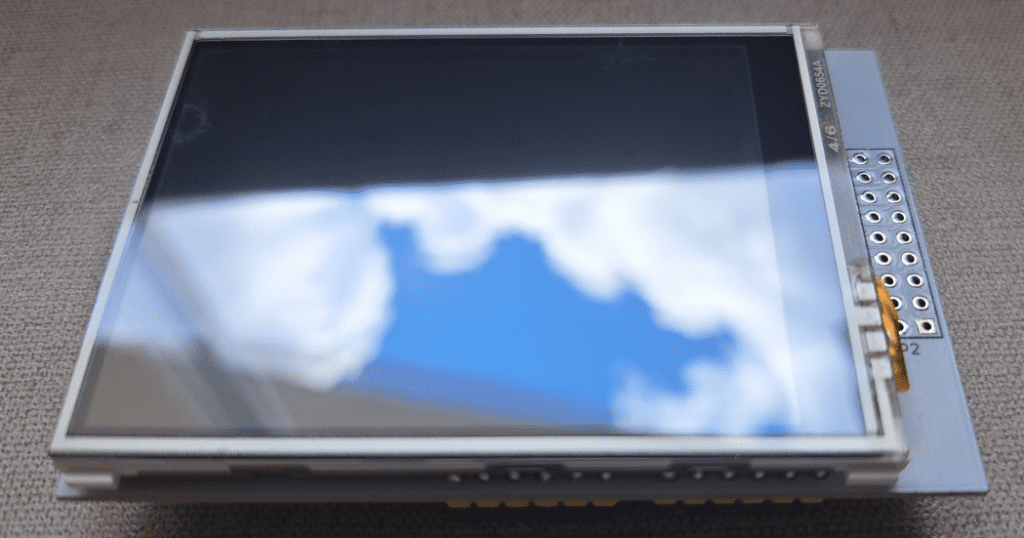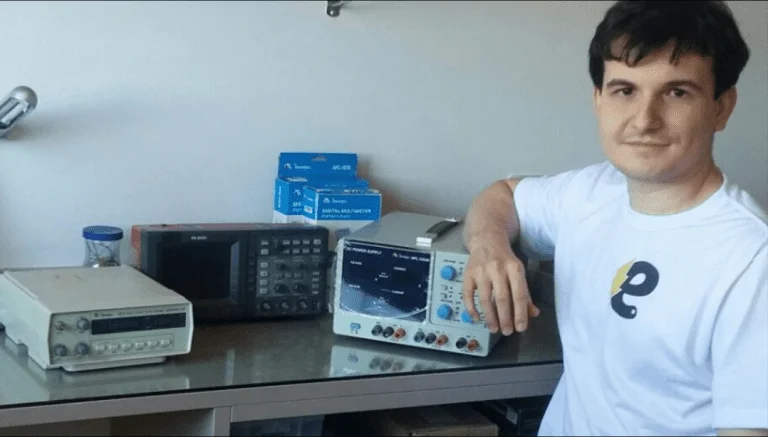In this post, it’s shown how the 4 current touchscreen technologies work. In addition to advantages and limitations of each type.
Resistive touchscreen
Consists of two layers, a flexible and a rigid, the flexible is made of a polyester plastic film, with ITO (indium tin oxide) coating and the rigid glass layer, also coated with ITO. Between these layers, there’s an insulating membrane or an air gap sustained by dot spacers. When a finger or object touches the flexible layer, the later is in contact with rigid layer, consequently, an electric current circulates between the layers. Each point on screen has a different resistance, when pressing a part of the screen, a controller converts resistance value in x and y coordinates.

These screens have low cost and consumption, also are resistant against water, dust and electromagnetic interference. In addition to that, you can use any object to click on screen. However, they have disadvantages such as: require periodic calibration, scratches can cause damage, allow the passage of only 75% luminosity and are less sensitive than other touchscreen technologies.
Capacitive touchscreen
This type is the most used in smartphones, tablets, laptops and ATMs. Consist in two rigid layers made of glass or plastic, separated by air gap. These layers have ITO films between the dielectric space, with the purpose to form a capacitor. In addition, layers are electrically charged, creating an electric field. When a finger touches the screen, there’s an alteration in the electric field at touch point and a small charge transfer go to the finger. Electrodes detect this alteration and the controller calculates touch spot’s coordinates.

This technology is much more sensitive and has high durability, in addition to be able to detect many touches at the same time. However, it’s subject to electromagnetic interference and work only with conducting objects, such as fingers and special pens.
Infrared touchscreen
Around the touchscreen, there’s a grid of infrared LEDs and phototransistors, when the finger touch in a point, two infrared rays are interrupted, causing the signal drop on phototransistor’s beam. Then, the controller detects touch’s coordinates from the interrupted rays by touch.

This type can detect almost any object, has high durability and good clarity, because there’s no additional layer on the screen. However, this technology is more expansive than others and the sunlight can affect screen’s performance. In addition to have low resolution and parallax problems. Usually, big interactive displays are of this type.
Surface acoustic wave (SAW)
Instead of infrared rays, ultrasonic waves travel through the surface. Piezoelectric transducers emit ultrasounds, the latter are directed by reflectors to the screen and go to the sensors or reflectors on the opposite side. When a finger touches the screen, part of wave are absorbed, consequently, sensors detect changes on waves’ frequency and information is transmitted to a computer, which determines touch’s coordinates.

The main disadvantage is that this screen is too sensitive to dust, dirt or water, in addition to high cost. On the other hand, it has great precision, sensitivity, clarity and durability. SAW touchscreens are present in inner environments with high traffic and public information kiosks.



